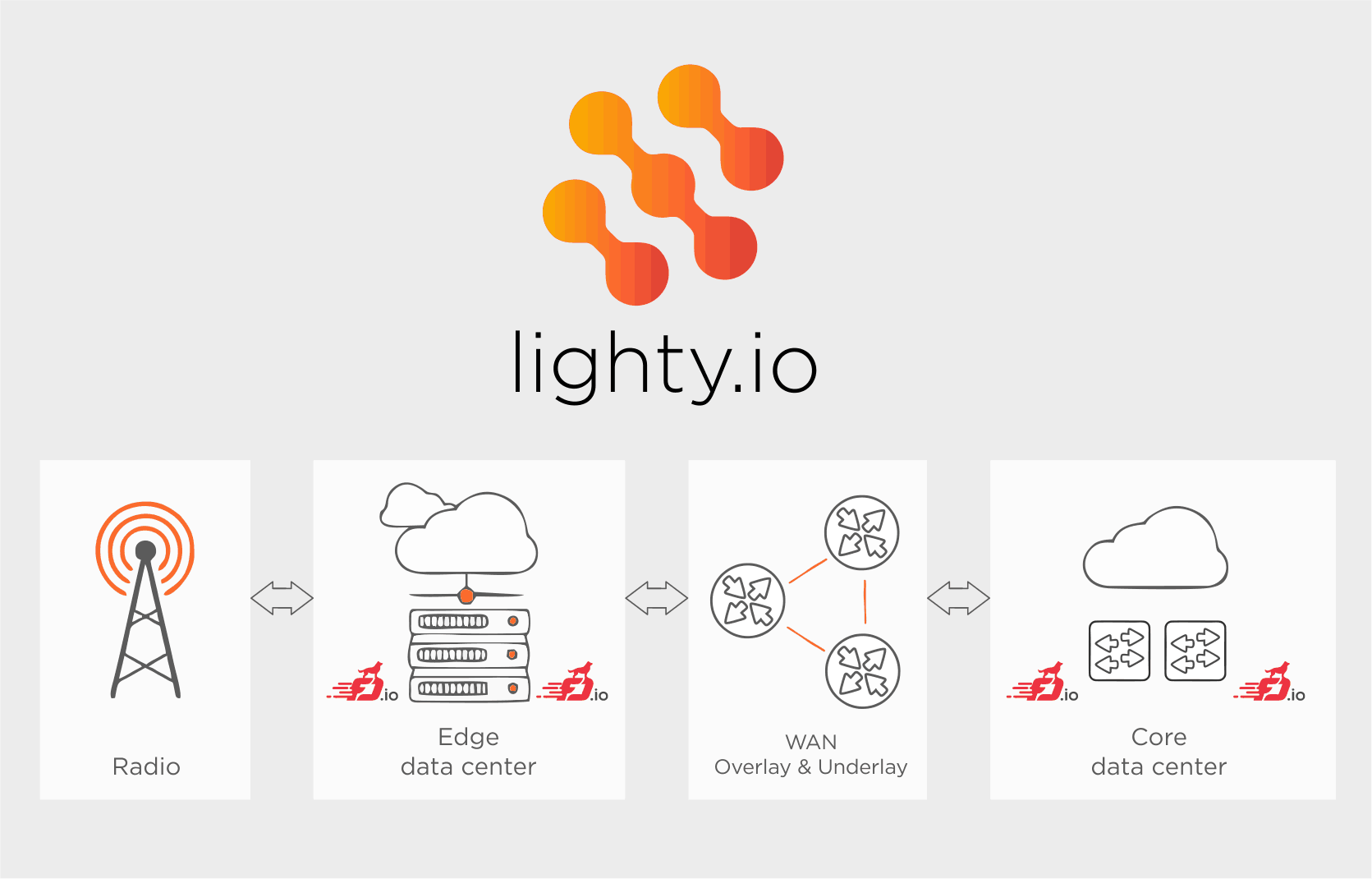The advantages of deploying lighty.io in Data Center Infrastructure Management (DCIM)
The DCIM market is continuing to evolve and large enterprises continue to be the primary adopters of new DCIM software solutions. The goal of a DCIM software initiative is to provide administrators the ability to identify, locate, visualize, and manage all physical data center assets with a holistic view.
PANTHEON.tech has developed lighty.io based on OpenDaylight in Java SE. It is a great software for implementation of customized DCIM solutions such as SDN controller, NFV orchestrator or VNF management etc.
Some of the great features, you will benefit from while managing your data center are listed below.
Model-driven approach
lighty.io implements a model-driven approach to data center infrastructure management. Because of the common models being used, intercommunication of configurational, operational, monitoring and telemetry data in all the parts of the systems becomes possible which are based on lighty.io.
These models define structure, syntax, and semantics of the data processed by each part of the system. Usage of standardized models by vendors (e.g., models from OpenConfig or IETF) leads to seamless migration from one vendor to another.
Scalability and controller hierarchy
- Horizontal scalability – lighty.io supports clustering. A feature, which allows horizontal scaling of the system by adding more instances (nodes) of the controller into a cluster
- Controller hierarchy – NB plugins of lighty.io allow the implementation of upper layer applications running as micro services and performing operations using the controller’s NB plugin API. It is also possible to design a hierarchy of controllers where the upper layer controller(s) performs operations using the lower layer controller’s NB plugins. One of the implemented NB plugins is a plugin that implements the NETCONF protocol. Using this NB plugin in the hierarchy of controllers makes possible to manage the lower layer controllers as NETCONF devices.
Security
lighty.io is implemented in Java, which is in nature a Type-Safe programming language. Type safety leads to more secure software than other software written e.g., in C/C++, while reaching a good performance. The model-driven approach and the source code generation also support software security.
These features minimize the possibility of error in the code by implementing the requirement of the verification of the input data from external applications and connected devices. Cyphering, authorization, and usage of these certificates are the matter of course.
Legacy and heterogeneous systems support
lighty.io implements the main SDN standards e.g., NETCONF, RESTCONF, YANG. Moreover, the legacy technologies that are already implemented in lighty.io makes SNMP southbound plugin possible. This shows that the capability of lighty.io being used not only in green-field deployments (implementing the system from scratch) but also brown-field deployments where it is needed to manage a heterogeneous set of networking devices.
Extensibility
As a software design principle, the model-driven approach speeds up and simplifies implementation of extensions with the architecture of lighty.io results in great extensibility. The architecture of the lighty.io defines Northbound – NB and Southbound – SB plugins implementations as a model-driven module.
NB & SB Plugins
NB plugins enable the communication of the controller with the upper layer applications. Such as dashboards, upper layer controllers, interDC orchestrators etc. The upper layer applications can be implemented as an external service or as a native module of the controller.
The upper layer applications mostly implement application logic, business logic, administration interfaces, data analytics, data transformation etc. NB plugins can be used to:
- submit commands to the SDN controller,
- send notifications to upper layers by the controller,
- send telemetry data to upper layers by the controller,
- monitor the controller by upper layers,
- read the operational data of the controller and devices orchestrated by the controller,
- the configuration of the controller itself or specific device orchestrated by the
controller.
SB plugins implement protocols and technologies extending the SDN controller capabilities with new standards and technologies allowing connections of new network devices. SB plugins can be used for:
- the configuration of networking devices,
- fetching operational (state) data of the networking devices,
- receiving telemetry data,
- monitoring of devices,
- submitting commands to the devices,
- receiving notifications from devices.
Models and model-driven approach simplify the implementation of new plugins and upper layer applications because the usage of these models allows source code generation of classes (OOP construct) and related code which verifies the syntax and semantics of the data minimizes the probability of errors in implementation caused by human interactions.
If you would like to know more about lighty.io and how it could improve your business, visit lighty.io or our Product Page.




![[Release] OpenDaylight Titanium](https://pantheontech1.b-cdn.net/wp-content/uploads/2025/08/odl-titanium-release.png)
![[Meet Us] PANTHEON.tech @ Open Source Summit 2025 in Amsterdam](https://pantheontech1.b-cdn.net/wp-content/uploads/2025/08/OSS_Temp.png)
![[What Is] LAG & MLAG](https://pantheontech1.b-cdn.net/wp-content/uploads/2025/08/lag-mlag-thumb.png)